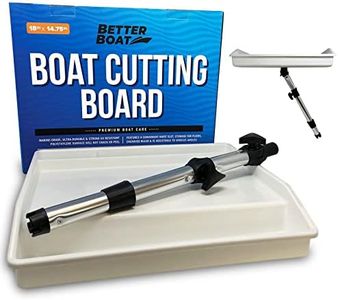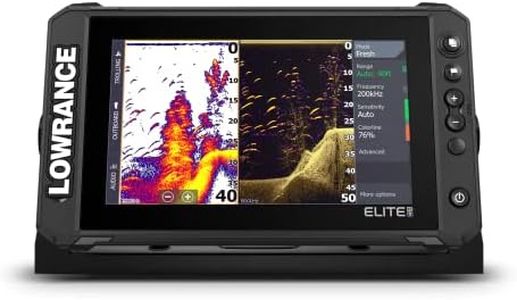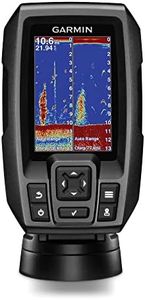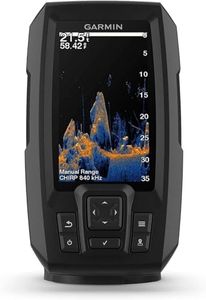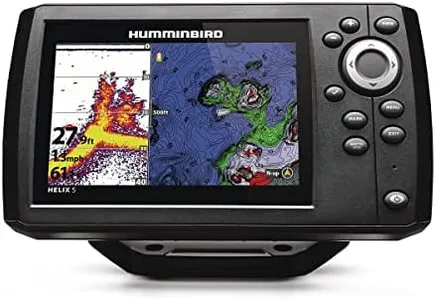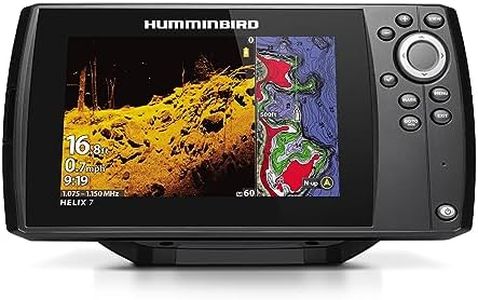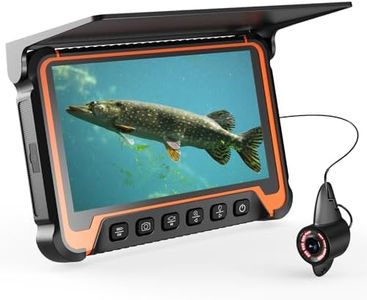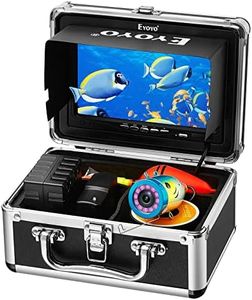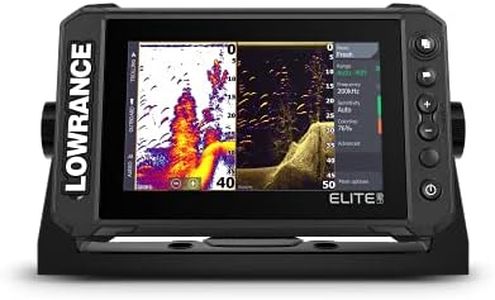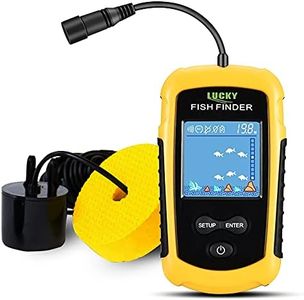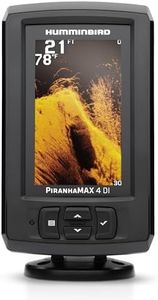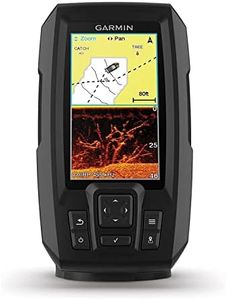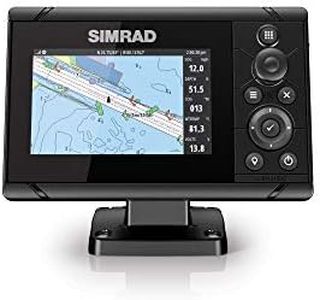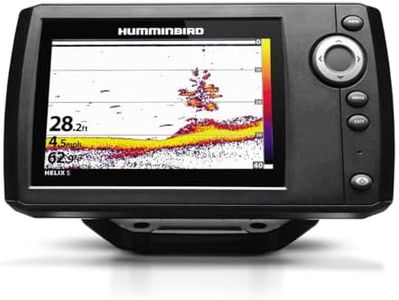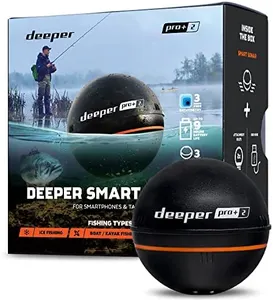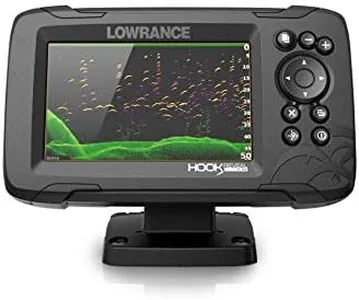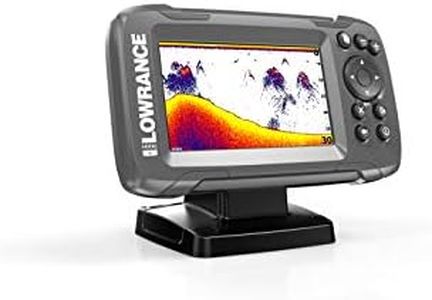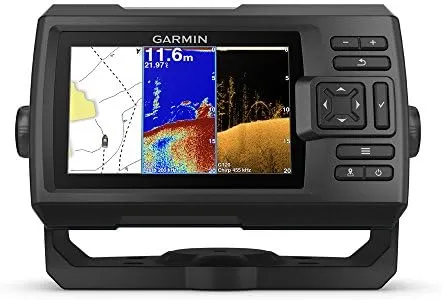10 Best Kayak Fish Finders 2025 in the United States
Our technology thoroughly searches through the online shopping world, reviewing hundreds of sites. We then process and analyze this information, updating in real-time to bring you the latest top-rated products. This way, you always get the best and most current options available.

Our Top Picks
Winner
Lowrance Elite FS 9 Fish Finder with Active Imaging 3-in-1 Transducer, Preloaded C-MAP Contour+ Charts
Most important from
492 reviews
The Lowrance Elite FS 9 Fish Finder is designed for anglers who want detailed underwater insights. It features a 9-inch high-resolution multi-touch LCD screen, making it easy to view and navigate through various settings. One of its standout features is the Active Imaging 3-in-1 transducer, which combines CHIRP, SideScan, and DownScan sonar technologies. This allows for clear and refined imaging of underwater structures and fish. Additionally, it supports ActiveTarget Live Sonar, which provides real-time images of fish and their movements, enhancing the fishing experience.
The preloaded C-MAP Contour+ charts are another significant advantage, providing detailed mapping of 8,900 U.S. lakes to help locate prime fishing spots. The inclusion of full networking capabilities like integrated wireless, NMEA 2000, and Ethernet connectivity allows for easy integration with other devices and data sharing. However, the device is relatively heavy at 4.53 kilograms, which might affect portability for some users, especially those looking for a lightweight option to carry on a kayak.
The high-tech features and networking options might be overwhelming for beginners who prefer simpler fish finders. Additionally, it requires a 12 Volt DC power source, which is something to consider for long fishing trips. The Lowrance Elite FS 9 is a robust and feature-rich fish finder suitable for serious anglers who need advanced sonar capabilities and detailed mapping, but its weight and complexity might be a drawback for casual users or those prioritizing portability.
Most important from
492 reviews
Garmin 010-01550-00 Striker 4 with Transducer, 3.5" GPS Fishfinder with Chirp
Most important from
9074 reviews
The Garmin 010-01550-00 Striker 4 is a compact fish finder designed specifically for anglers who want to enhance their fishing experience while on the water. One of its standout features is the Clear Vu scanning sonar, which provides detailed imagery of underwater structures and fish, making it easier to identify potential fishing spots. The device boasts a decent display size of 3.5 inches with a resolution of 480 x 320 pixels, which, while not the largest, is sufficient for clear visibility in most conditions. Its simple interface with dedicated buttons ensures that users can navigate the device without difficulty, a plus for those who may not be tech-savvy.
The built-in GPS capability allows users to mark waypoints and navigate to specific locations, which is particularly beneficial for kayakers looking to find their way back to favorite fishing spots or avoid obstacles. The unit is also portable, weighing only 0.5 pounds and designed to fit easily on a kayak.
However, there are some drawbacks to consider. The screen size may feel a bit small for some users, especially when in bright sunlight, and the resolution, while adequate, could be better compared to higher-end models. Also, while the maximum depth capability of 1,600 feet in freshwater is impressive, it may not be necessary for most kayak fishing scenarios since most anglers won't be targeting depths that deep. The battery-powered design is convenient, but keep in mind that battery life will depend on usage, and users may need to manage power carefully during longer fishing trips. Additionally, while the flasher feature is a nice touch for ice fishing or vertical jigging, it might not be of much use for every angler.
The Garmin Striker 4 offers a solid blend of functionality and ease of use, making it a great choice for novice to intermediate kayaker anglers. Those seeking advanced features or larger display options may want to explore different models.
Most important from
9074 reviews
Garmin 010-02550-00 Striker Vivid 4cv, Easy-to-Use 4-inch Color Fishfinder and Sonar Transducer, Vivid Scanning Color Palettes
Most important from
1980 reviews
The Garmin Striker Vivid 4cv is a versatile fishfinder well-suited for kayak fishing due to its portable and compact design. Key strengths include the 4-inch color display, which provides vivid scanning sonar color palettes to easily distinguish fish and underwater structures. This makes it user-friendly, especially for beginners.
The included GT20 transducer supports both CHIRP traditional sonar and CHIRP ClearVü scanning sonar, offering detailed and clear underwater imaging. Additionally, the high-sensitivity GPS is a notable feature, allowing you to mark waypoints, create routes, and monitor your boat’s speed, which is essential for effective navigation and fishing strategy. The built-in Quickdraw Contours mapping is also beneficial for creating personalized fishing maps, adding to its utility.
However, the 4-inch screen might feel a bit small for some users, especially in bright sunlight, and the button interface may not be as intuitive as touchscreens for some. Being battery-powered adds to its portability, but it also means you need to keep an eye on battery life during extended trips. Despite these minor drawbacks, the Striker Vivid 4cv offers great value with its combination of sonar technology, GPS capability, and easy-to-use design, making it an excellent choice for kayak anglers looking for a reliable and efficient fishfinder.
Most important from
1980 reviews
Buying Guide for the Best Kayak Fish Finders
Choosing the right kayak fish finder can significantly enhance your fishing experience by helping you locate fish more efficiently. When selecting a fish finder, it's important to consider various specifications that will determine how well the device meets your needs. Understanding these key specs will help you make an informed decision and ensure you get the best fit for your fishing adventures.FAQ
Most Popular Categories Right Now
